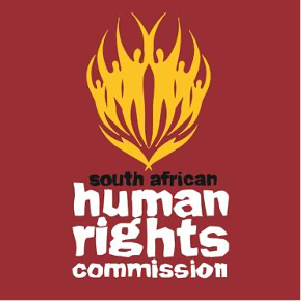Matters of this nature coming to the attention of the Commission include where a child was beaten with a blackboard duster, where a child was beaten with a broomstick, an instance where a child at a special needs school was struck by a teacher with a stick or an instance where a learner’s head was hit against a desk by a teacher. Despite the fact that this issue is frequently reported on there is a considerable sense that this issue remains poorly understoodand that interventions in this regard remain sparse and fragmented. In light of this, the South African Human Rights Commission (“SAHRC/the Commission”) will be convening a national conference entitled “Ending Corporal Punishment in Schools”, set to take place on the 29th and 30th May 2014.
Corporal punishment is defined by the UN Committee on the rights of the child as ‘any punishment in which physical force is used and intended to cause some degree of pain or discomfort, however light..It involves hitting or slapping a child with the hand or an implement (e.g. belts, canes etc.), kicking, shaking, or throwing a child, pinching or pulling their hair; forcing a child to stay in an uncomfortable or undignified position, or to take excessive physical exercise; burning or scarring a child (and the threat of any of these actions) as a form of discipline.’
The practice of corporal punishment in schools is contrary to the prescripts of the South African Constitution and international human rights norms and standards. It was outlawed in 1996 by section 10(1) of the South African School’s Act 84 of 1996 (“School’s Act”) and further by section 3(4)(n) of the National Education Policy Act 27 of 1996 (“National Education Policy Act”). Section 10 of the School’s Act specifically states that, “(1) No person may administer corporal punishment at a school to a learner;(2) Any person who contravenes subsection (1) is guilty of an offence and liable on conviction to a sentence which could be imposed for assault.”Section 3(4)(n) of the National Education Policy Act 27of 1996 states that,“...no person shall administer corporal punishment, or subject a student to psychological or physical abuse at any education institution”
Independent schools too, are prohibited from using corporal punishment. This was confirmed in the case of Christian Education South Africa v Minister of Education 2000 (4) SA 757. In this case, the application was brought by parents of learners who alleged that “corporal correction” constituted a vital part of their religious beliefs and the prohibition of the use of corporal punishment in schools violated their constitutionally entrenched rights to practise their religion. Through a balancing of interests, the court refused to exempt Christian schools from the prohibition.
Despite legal provisions which exist to protect children from corporal punishment in the school environment, statistics from the General Household Surveys 2012 indicate that 15.8% of learners experienced some kind of corporal punishment in schools. Overall, this represents a marginal decrease from figures of 16.3% published in the 2009General
Household Surveys. Despite this, considerable increases in the incidence of corporal punishment are visible in some provinces, such as the Eastern Cape. In this province, the percentage grew from 25.5% to 30.3%. This province also has the highest incidence of corporal punishment in the country, followed by Kwa-Zulu Natal. Gauteng shows the largest rate of reduction between 2009 and 2012, with figures of 11.7% and 4.6% respectively.
Through convening a conference on “Ending Corporal Punishment in Schools”, the SAHRC aims to sensitise role-players to the nature and scope of the current situation; to understand the role of stakeholders in implementing the dictates of the law sanctioning corporal punishment in schools; to unpack the challenges to implementation of the law; to explore how to make schools safer and more child friendly through curbing the practice of corporal punishment as a form of discipline; to derive a meaningful, just and equitable way forward for the children of South Africa and to establish a means through which the Commission can monitor the situation going forward.
Corporal punishment in schools is a challenge which requires the committed and intensive involvement of many roleplayers if it is to be overcome. Constant vigilance is required on the part of teachers, school-governing bodies, principals, trade unions, parents, caregivers, community members, non-governmental organisations and other independent institutions as well as government to ensure the safety of learners at schools and to protect them from this form of physical violence.
It is the sincere hope of the Commission that convening this event will produce outcomes which contribute to the improvement of school life for children across the country, allowing them to be educated without fear or exposure to inhumane treatment through corporal punishment.
ENDS
For comments email This email address is being protected from spambots. You need JavaScript enabled to view it.
Ending Corporal punishment in schools requires commitment of all role players
29 May 2014
By Commissioner Mokate, SAHRC Commissioner responsible for Children and Basic education
Despite having been abolished for 18 years, corporal punishment in schools continues with alarming frequency with the General Household Surveys 2012, indicating that some 2.2 million children were made subject to the practise in this year. Of late, the SAHRC has noted a considerable rise of incidence of corporal punishment in schools.
About us
Understanding PAIA
The Human Rights Commission is the national institution established to support constitutional democracy. It is committed to promote respect for, observance of and protection of human rights for everyone without fear or favour.
Sentinel House, Sunnyside Office Park, 32 Princess of Wales Terrace, Parktown, Johannesburg, South Africa
011 877 3600 (Switchboard)

